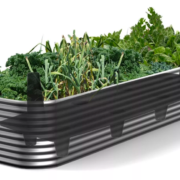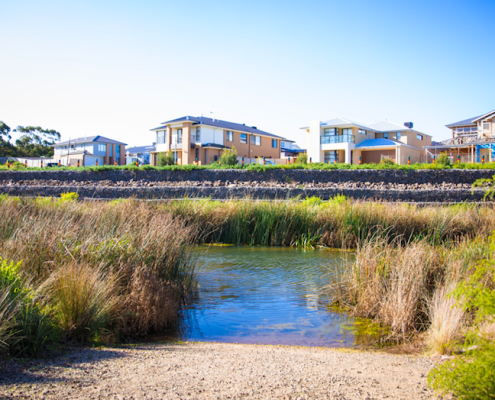Bioplanters and new ways with waterways
DEALING with the water run-off from a 200-lot hillside residential estate at Wandana is an engineering challenge.
Melbourne environmental engineering company Biofilta, whose Geelong projects have included Leopold’s Gateway Plaza and several indoor feature gardens at GMHBA Stadium, has taken the challenge by designing an integrated system involving water harvest, storage and treatment.
Biofilta has been involved in innovative stormwater harvesting and wetland projects across Melbourne, but the Wandana project, the Villawood Properties estate above Highton overlooking the Geelong Ring Road, presented a new level of complexity.
“There’s nothing as compact and as highly engineered as this one,” Biofilta chief executive Marc Noyce said.
“Our system works really well where there are tricky sites, steep slopes, areas where you can’t get a wetland in.”
He said the integrated system that has been installed includes 200 cubic metres of underground flood detention storage, gross pollutant capture, and a 50sq m bio-planter to biologically treat all the low flows from its steep upstream catchment.
“It also includes a separate tank holding 20,000 litres of filtered water to recirculate in hot weather to keep the plants alive without the need to use potable water,” he said.
The system provides flood protection, stormwater treatment and sustainable natural treatment in a compact footprint.
The bio-planter is a lush affair, featuring local coastal plants and sand dune plants adapted to wet and dry conditions. Two lots of microbes in the planter effectively treat the water.
“Water goes in at the top, it looks like dirty dishwater and it has the heavy metal nasties,” Mr Noyce said.
“It stops on top, soluble pollutants soak through one set of aerobic bacteria, and they really transform the pollutants. That flows to the bottom, where there’s no oxygen — that promotes anaerobic bacteria that does another polishing job of the pollutants.”
By pollutants, think everyday materials such as metal dust from roads, oil from cars, rooftop sediments, brake dust and the like — things that would eventually pose problems elsewhere.
Villawood was the first Victorian developer to receive UDIA EnviroDevelopment accreditation and is recognised for its high level of conservation and ecosystems and dedication to saving water and energy.
Chief executive Rory Costelloe said Villawood was always striving to investigate and implement any means of saving water and energy.
LINK: http://regionalnews.smedia.com.au/geelongadvertiser/default.aspx?publication=NCGA


